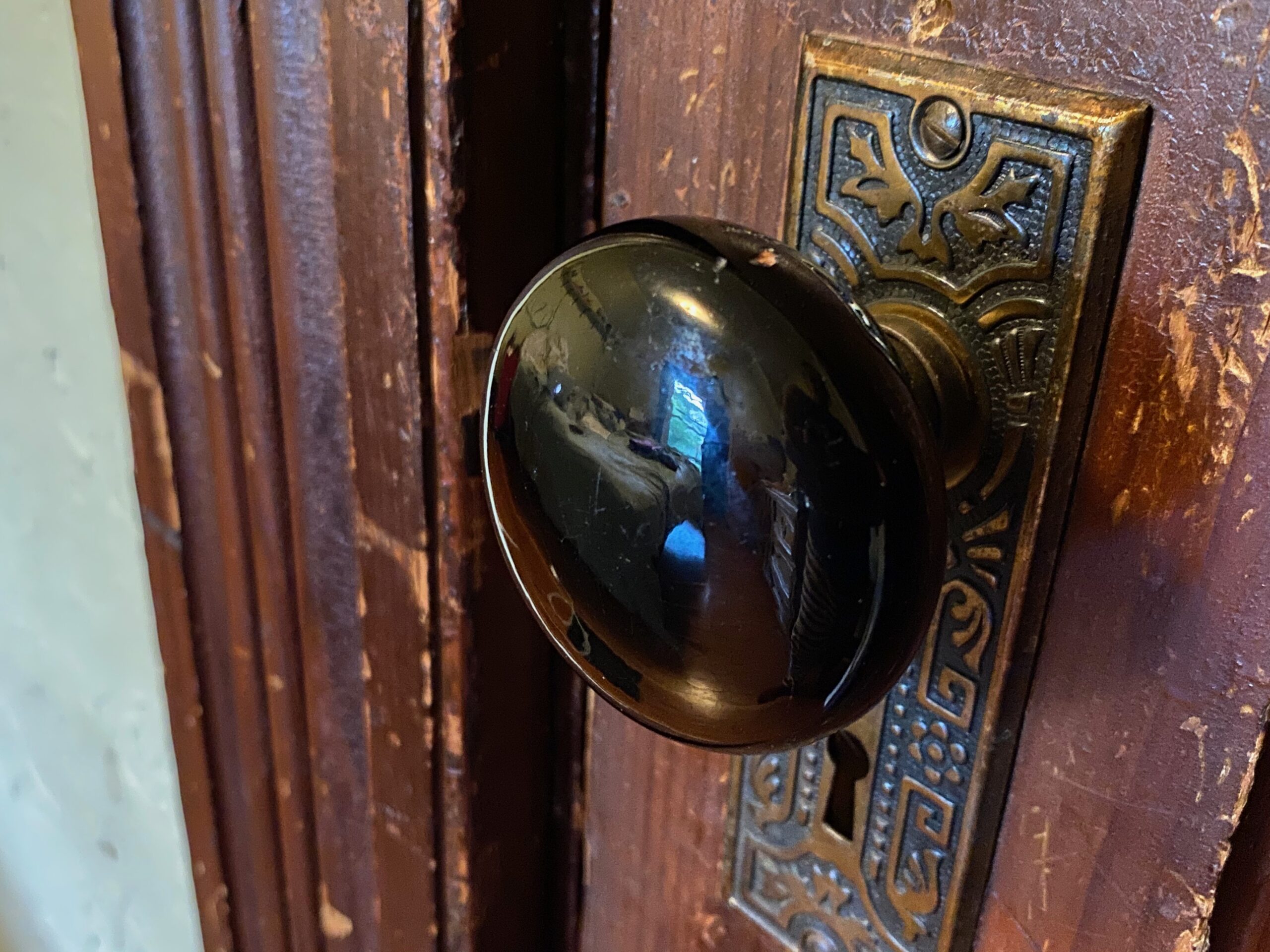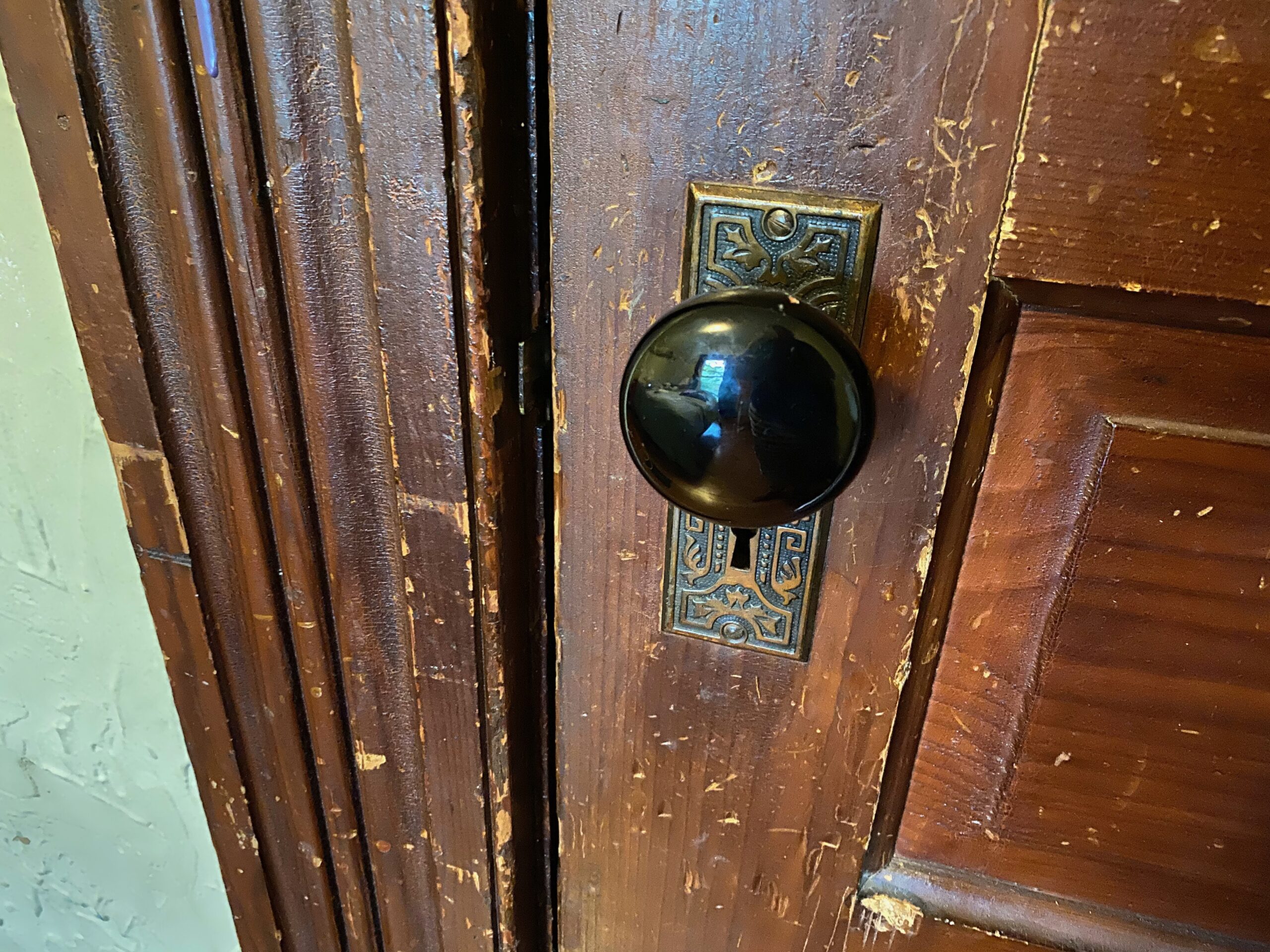Original black glass door knob from a 1905 home: 446,600 ppm Lead + 420 ppm Antimony.
Introduction: Tamara Rubin is an independent advocate for consumer goods safety, and she is also a mother of Lead-poisoned children. She began testing consumer goods for toxicants in 2009 and was the parent-advocate responsible for finding Lead in the popular fidget spinner toys in 2017. She uses high-precision XRF testing (a scientific method used by the Consumer Product Safety Commission) to test consumer goods for metallic contaminants – including Lead, Cadmium, Mercury, and Arsenic.
Black glass of door knob from 1905 home
(likely original hardware)
- Lead (Pb): 446,600 +/- 48,000 ppm
- Barium (Ba): 2,031 +/-992 ppm
- Antimony (Sb): 420 +/- 246 ppm
- Tin (Sn): 561 +/- 193 ppm
- Copper (Cu): 1,261 +/- 452 ppm
- Nickel (Ni): 1,038 +/- 258 ppm
- Iron (Fe): 10,400 +/- 1,400 ppm
- Vanadium (V): 3,360 +/- 2,130 ppm
- Titanium (Ti): 942 +/- 462 ppm
- Chlorine (Cl): 34,900 +/- 7,100 ppm
Are the results reported above accurate?
Test results reported here on my blog are science-based, accurate, and replicable. Test results reported here are from tests that were done for a minimum of 60 seconds each (unless otherwise noted), and repeated multiple times, to confirm the results. As with all the testing reported here on my blog, a freshly-calibrated high-precision XRF instrument testing in Consumer Goods mode was used to test the item pictured here.
How much Lead is too much Lead?
There is no total content limit for total measurable Lead (as detectable and measured with an XRF instrument) in modern household components. Limits have only been set for the total amount of any detectable Lead that is leaching at the time of manufacture – as measured by leach-testing (and only for things like dishes and water systems.)
For context however, for modern items intended for use by children to be legal (and not subject to recall) the paint or coating of these items needs to be below 90 ppm Lead, and the substrate of the item needs to fall below 100 ppm Lead when tested. If this door knob were made today and considered to be an item “intended to be used by children”, it would be illegal. But please realize that even modern door knobs are allowed to be high Lead and are not considered to be items intended for use by children.
I consider items that test positive for Lead at levels below 90 ppm to be “Lead-safe”. [Note: my personal preference is to have all of the items in my own home be 100% Lead-free – not just “Lead-safe”.]
Are you new here?
For those new to my website, please check out the menu in the header of the website for more information about how I test things (and my background, etc.) On each post you can also click on any of the keyword tabs at the top of the post to find more items in that category. Here’s the post discussing the type of testing I do, and the specific instrument I use to detect, analyze and confirm metals content, and ultimately produce the resultant data for each item reported here – link.
As always, thank you for reading and for sharing my posts. Please let me know if you have any questions!
Tamara Rubin
#LeadSafeMama
Never Miss an Important Article Again!
Join our Email List





I have door knobs just like this in my 1890’s house. I’ll be removing them immediately!